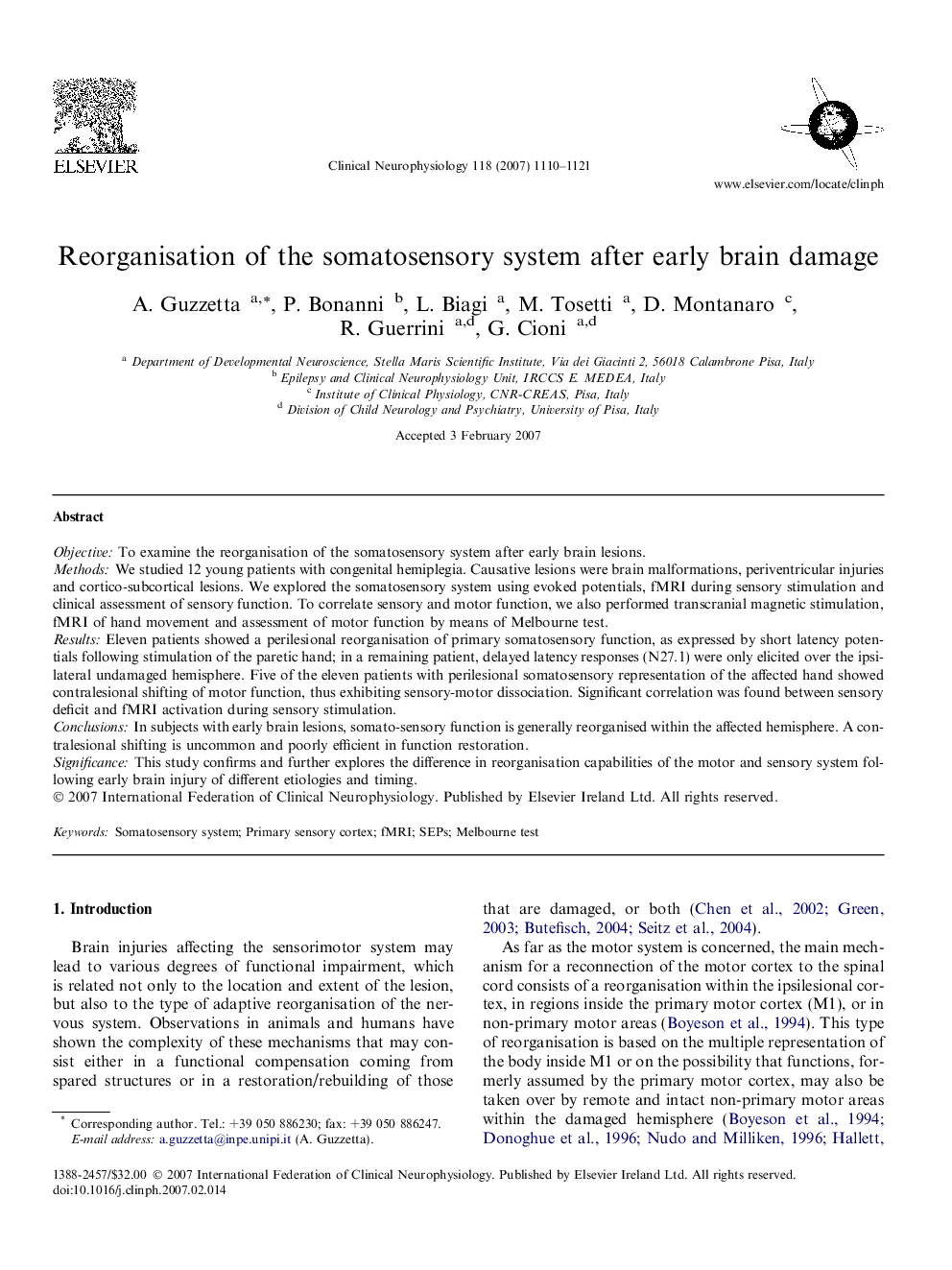| Article ID | Journal | Published Year | Pages | File Type |
|---|---|---|---|---|
| 3048533 | Clinical Neurophysiology | 2007 | 12 Pages |
ObjectiveTo examine the reorganisation of the somatosensory system after early brain lesions.MethodsWe studied 12 young patients with congenital hemiplegia. Causative lesions were brain malformations, periventricular injuries and cortico-subcortical lesions. We explored the somatosensory system using evoked potentials, fMRI during sensory stimulation and clinical assessment of sensory function. To correlate sensory and motor function, we also performed transcranial magnetic stimulation, fMRI of hand movement and assessment of motor function by means of Melbourne test.ResultsEleven patients showed a perilesional reorganisation of primary somatosensory function, as expressed by short latency potentials following stimulation of the paretic hand; in a remaining patient, delayed latency responses (N27.1) were only elicited over the ipsilateral undamaged hemisphere. Five of the eleven patients with perilesional somatosensory representation of the affected hand showed contralesional shifting of motor function, thus exhibiting sensory-motor dissociation. Significant correlation was found between sensory deficit and fMRI activation during sensory stimulation.ConclusionsIn subjects with early brain lesions, somato-sensory function is generally reorganised within the affected hemisphere. A contralesional shifting is uncommon and poorly efficient in function restoration.SignificanceThis study confirms and further explores the difference in reorganisation capabilities of the motor and sensory system following early brain injury of different etiologies and timing.
